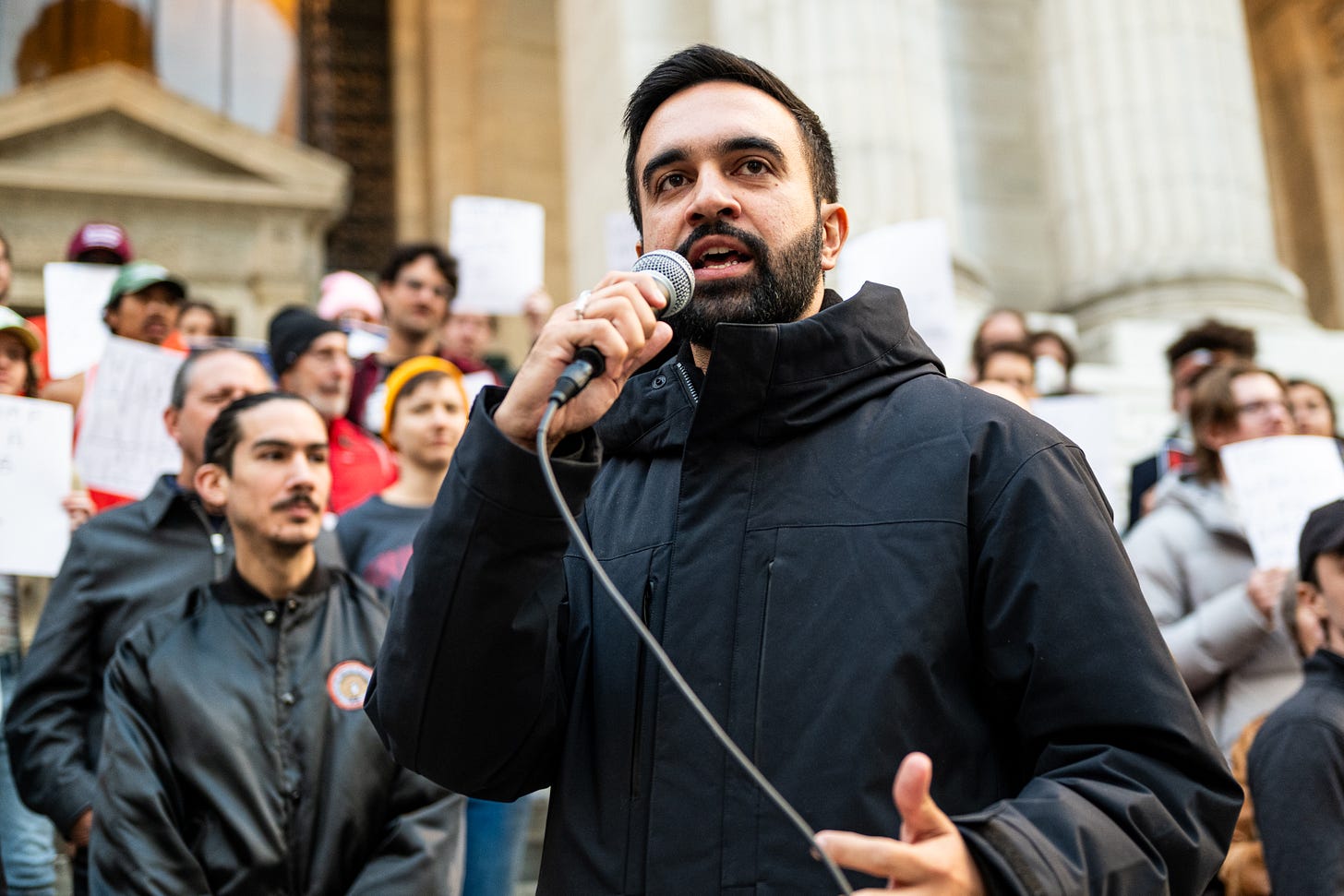The narrative change strategy that helped secure Zohran Mamdani’s primary win
Mamdani didn't just win because he became an online influencer. It was also because of the people he brought with him.
This week’s FRESH Focus column was adapted from our most recent TikTok video.
There’s been a ton of buzz about Zohran Mamdani’s exciting victory the week before last clinching the Democratic primary for Mayor of New York. (As a fellow Queens native, I personally couldn’t have been more thrilled.) This includes a lot of analysis about how he claimed this win through his viral videos on social media. While his online prowess certainly contributed, I think it’s dangerous to presume that simply becoming an online influencer gets you the prize. It’s more complicated than that.
While Mamdani is obviously the face of his campaign – and social media played a huge role – his victory was also won by creating an ecosystem of players who helped spread his message far and wide.
This is one of the main insights we found in Flipping the Script, a report that shares some of the most effective strategies thought leaders can use to create narrative change. Think about who was with Mamdani in these videos: from pop culture celebrities like Laverne Cox, to the local United Auto Workers, to political allies like AOC and Elizabeth Warren, to halal truck workers, to Kareem Rahma on his popular show SubwayTakes, he utilized the power of a diverse range of New Yorkers from different walks of life from different communities and values to spread his message. In other words, an ecosystem of players.
To understand a bit more about how and why this strategy worked so well, we look at Bridgit Antoinette Evans of Pop Culture Collaborative, who offers a helpful framework when talking about the media landscape – she calls it a “narrative ocean.”
In the narrative ocean, there are many players interacting with one another to shape the stories we tell about ourselves and the world. She says the potential for impact happens through collective efforts that are less about delivering a product, or as she says, a “drop in the ocean” – and more about shifting the pH of that narrative ocean – thus changing the perception of the issue we’re talking about.
But to achieve this, we need an ecosystem of players to become part of that narrative ocean. This includes organizers, journalists, policymakers, podcasters, artists – a diverse crew of people with different skillsets and from different spaces – to use a variety of strategies to amplify your message to their communities.
If you can do this, you’ll garner more attention and reach a wider audience over time – which is exactly what Mamdani did over the course of the last several months. And he did it beautifully.
So next time you’re thinking about bringing a big idea into the public conversation, ask yourself: who are the diverse set of players who you can bring into your ecosystem to help spread your idea far and wide? This will help change that pH of the narrative ocean, and ultimately inspire public action.
Want to learn more about how to move your issue from the margins to the mainstream? Check our new report, Flipping The Script: Strategies and Insights on Shifting Societal Narratives from GOAT Communicators.



